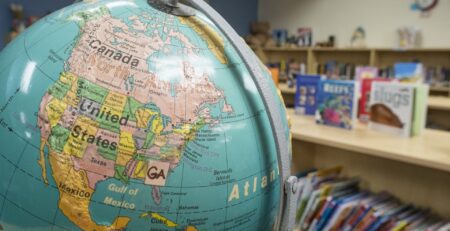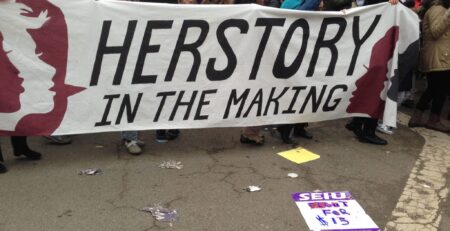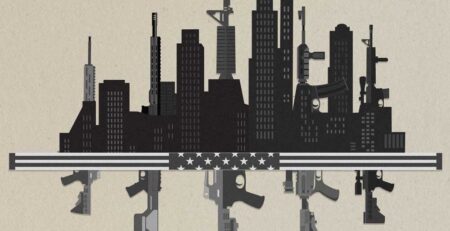This is custom heading element
[post-fields post_field=”wpcf-subtitle”]
[post-fields post_field=”wpcf-byline”]

With the pandemic looming over another holiday, it’s hard not to notice higher prices on many items, from gas to groceries. The U.S. Bureau of Labor Statistics says consumer prices increased 6.2 percent in the past year — the largest jump since 1990. That’s due in part to supply chain logjams; in a recent survey, 62 percent of shoppers report seeing low or out-of-stock inventory. Now, just as the supply issues have begun to stabilize, the new Omicron variant could threaten that recovery.
Here, Rajeev Dhawan director of the Economic Forecasting Center at J. Mack Robinson College of Business, makes sense of the latest developments that are likely already affecting your wish list this holiday season.
The U.S. economy has been through shockwaves over the past 18 months. Has this year’s economic turmoil been solely about the pandemic or is there more at play?
What we are seeing right now is what I like to call an “Economic Tango” that is being dictated by the virus. Every time there is a new wave of infections, the economy takes a step back. That affects everything: employment in the hospitality sector, supply chain bottlenecks that cause consumer prices to rise, as well as pullback in retail spending that requires human contact. It’s one step forward, then one step back. Things improve, then you’re hit with another variant and the dance changes again.
We hear a lot about consumers paying more for many items. Why is inflation rising?
When the world shut down last March, that was a shock to the system. We had no choice but to cocoon at home. People started to shop more online. Demand for products like groceries shot up as we stopped eating at restaurants. At the same time, the shutdown disrupted several supply chains, like the meat supply. That’s why we have seen food prices go up. This is classic supply and demand.
Another example: During the early months of the pandemic, the demand for gasoline evaporated and prices came down. Now, prices are spiking up, and not just because demand is rising as we trundle back to in-person work or finally book a vacation. For a decade preceding the pandemic, the U.S. was experiencing a fracking boom, making this country the top producer of natural gas and crude oil. That activity was literally chopped off at the knee last year, and it will likely be some time before we have plenty of oil to bring gas prices down on a sustained basis. Even the current drop in oil price due to Omicron fears will take a while to show up at the gas pump.

How long do you expect rising inflation to last?
It’s hard to say. This record inflation we are seeing will get under control eventually. But don’t expect prices to necessarily return to pre-pandemic levels. I expect we’ll continue to pay elevated prices for many products — and especially services.
This year has produced major global supply chain disruptions. What’s behind the delays?
China and neighboring countries such as Japan, Korea and Malaysia are an integral part of the supply chain. In those countries, COVID-19 outbreaks subsequent quarantine requirements put pressure on the shipping lines just as consumers were ordering more goods online. That created a massive traffic jam at ports here. Those delays create a domino effect as you go along the supply chain.
The good news is these issues are beginning to abate. Shipping rates out of China have already fallen by 25 percent or more in the last couple of weeks. Unfortunately for holiday shoppers, I think it will be Spring before these problems subside entirely. However, with the uncertainty of the Omicron variant, that could pose additional risks.
What are some of your expectations about what U.S. consumers may have in store for the new year?
I’ve been keeping a close eye on spending patterns, and inflation does not seem to be deterring people from spending money on big-ticket items. The silver lining to these supply chain delays is that shoppers will find plenty of great deals after Christmas. If you can wait to buy those items you’ve had your eye on, you’ll likely find prices have come down.
Interest rates, on the other hand, will likely go up. The Federal Reserve has begun to taper its bond-buying program, which is a prelude to rate hikes. As a result, home purchases will likely cost more.
I also expect prices for services — things like haircuts, restaurant meals and hotel stays — to remain elevated. Employers will likely need to pay these service workers a higher wage rate to entice them back to the job market. Inflation for services will come down next year, but that only means we will see prices rise more slowly rather than drop.












Leave a Reply